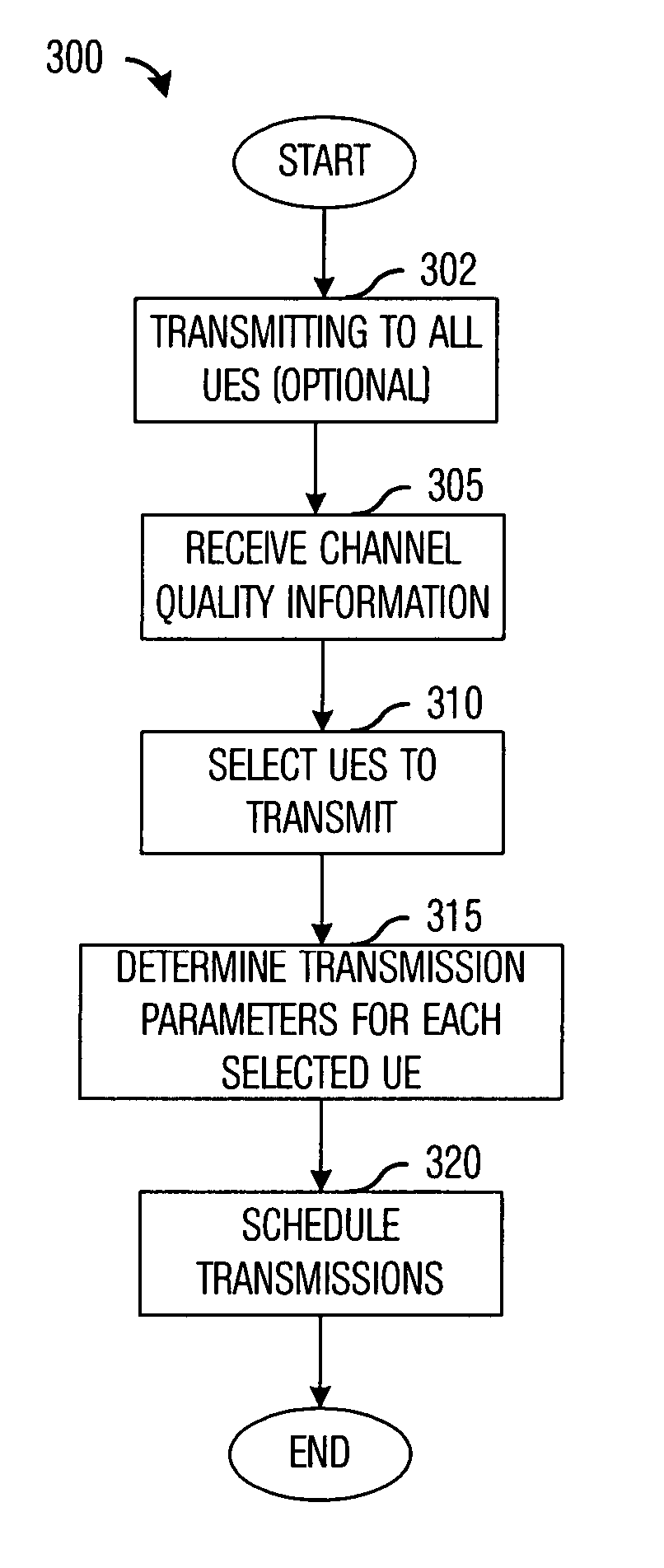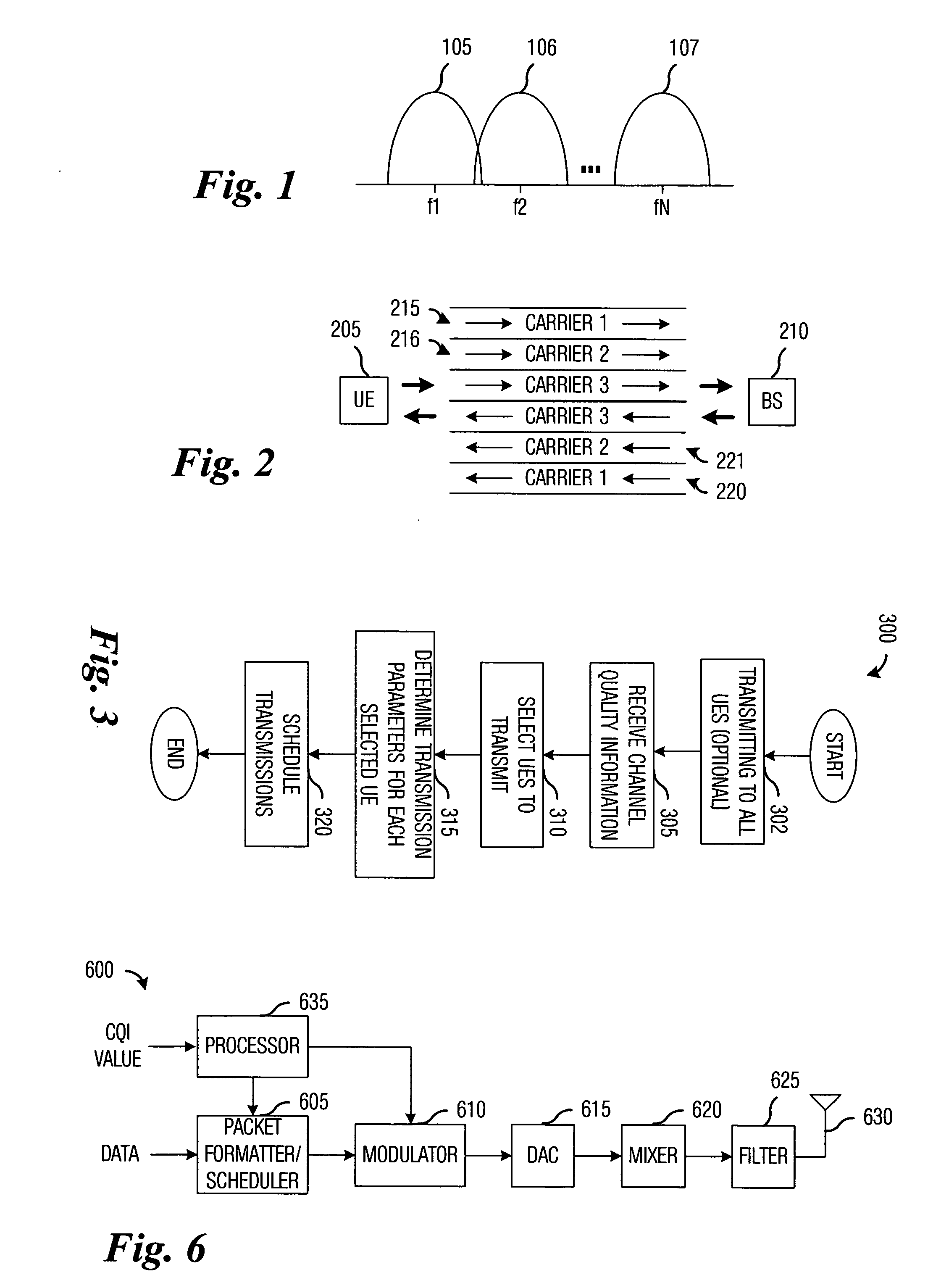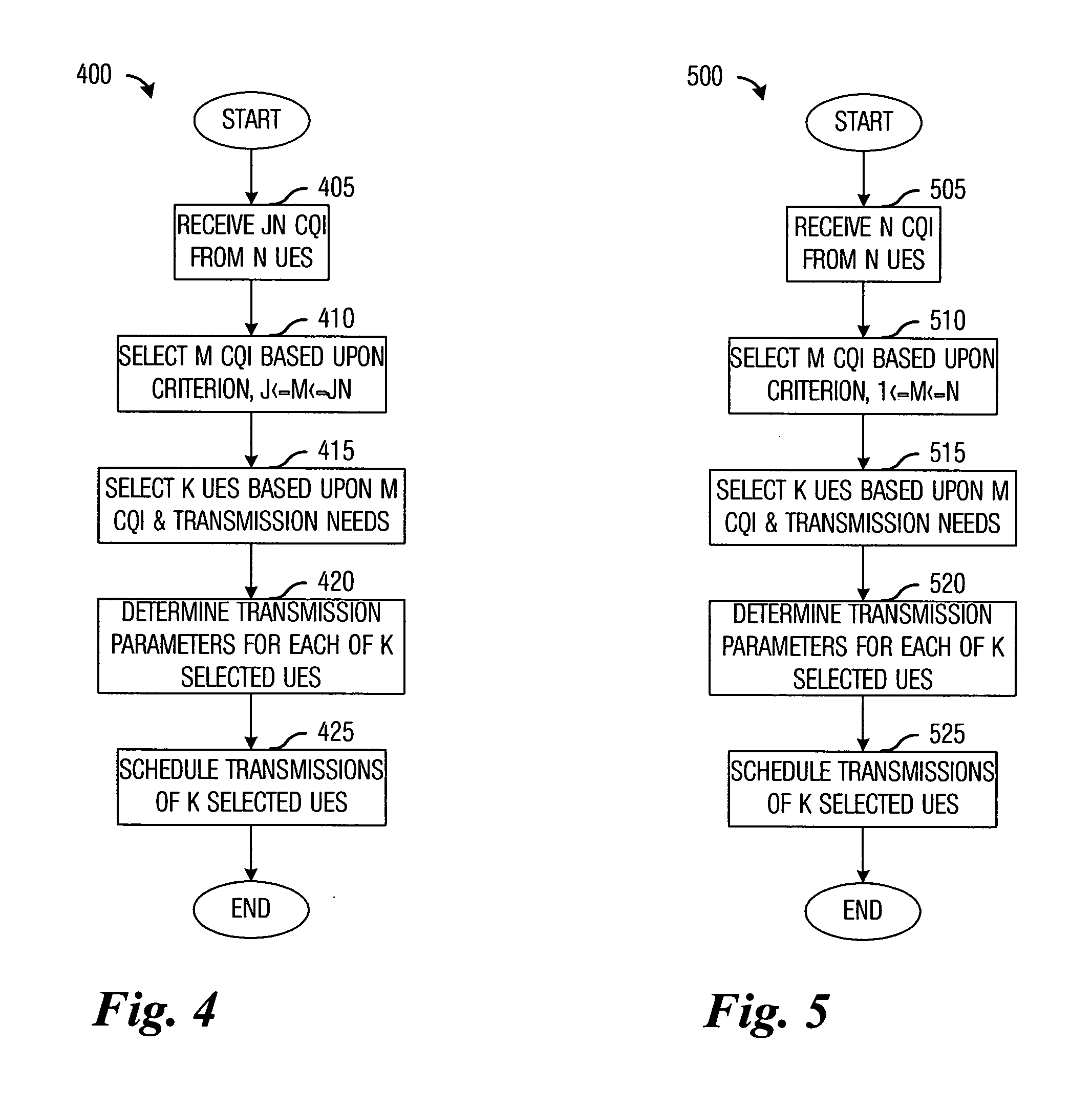Packet transmission scheduling in a multi-carrier communications system
a multi-carrier communications system and packet transmission technology, applied in the field of digital communications, can solve the problem that the overall system capacity of the multi-carrier communications system does not exceed the total bandwidth, and achieve the effect of improving retransmission performan
- Summary
- Abstract
- Description
- Claims
- Application Information
AI Technical Summary
Benefits of technology
Problems solved by technology
Method used
Image
Examples
Embodiment Construction
[0020] The making and using of the presently preferred embodiments are discussed in detail below. It should be appreciated, however, that the present invention provides many applicable inventive concepts that can be embodied in a wide variety of specific contexts. The specific embodiments discussed are merely illustrative of specific ways to make and use the invention, and do not limit the scope of the invention.
[0021] The present invention will be described with respect to preferred embodiments in a specific context, namely a three-carrier multi-carrier communications system, such as 3xEV-DV, which is an extension to a single carrier communications system 1xEV-DV. 1xEV-DV is an evolution of CDMA2000 and supports voice and high-speed data using code-division multiple access (CDMA). The invention may also be applied, however, to multi-carrier communications systems in general, with no limit on the number of carriers, such as NxEV-DV (an N-carrier EV-DV system) and an extension to 1x...
PUM
 Login to View More
Login to View More Abstract
Description
Claims
Application Information
 Login to View More
Login to View More - R&D
- Intellectual Property
- Life Sciences
- Materials
- Tech Scout
- Unparalleled Data Quality
- Higher Quality Content
- 60% Fewer Hallucinations
Browse by: Latest US Patents, China's latest patents, Technical Efficacy Thesaurus, Application Domain, Technology Topic, Popular Technical Reports.
© 2025 PatSnap. All rights reserved.Legal|Privacy policy|Modern Slavery Act Transparency Statement|Sitemap|About US| Contact US: help@patsnap.com



